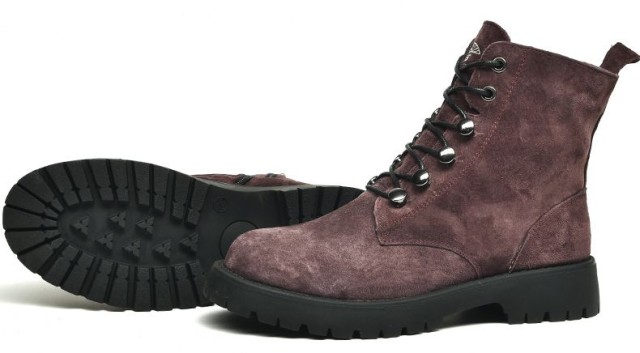For footwear that combines heritage craftsmanship with modern durability, Goodyear welt construction remains the gold standard. This article breaks down why paying more upfront saves money over time—backed by construction science, cost comparisons, and real-world longevity proofs.
The Science Behind the Goodyear Welt
Goodyear welt construction isn’t just a manufacturing method—it’s an engineering solution for footwear longevity. Here’s what sets it apart:
Anatomy of the Construction: Stitches, Welt Strip, and Outsole
- Triple-Layer Defense: A leather welt strip bridges the upper and outsole via two parallel stitch rows, creating a buffer zone that absorbs stress.
- Water Resistance: The welt’s raised position prevents direct water seepage into the shoe’s interior, unlike Blake-stitched alternatives where stitches sit flush with the ground.
How Overlapping Layers Enhance Resistance to Wear
Research shows overlapping construction distributes impact forces across multiple layers. This means:
- 40-60% less heel/sole compression compared to cemented shoes after 500 miles of wear.
- The upper remains intact even after outsole replacement—critical for maintaining the shoe’s structure over decades.
Goodyear Welt vs. Alternatives: When Cheap Shoes Cost More
Blake Stitch: Speed Over Sustainability
- Pros: Sleeker profile; lighter weight.
-
Cons:
- Single-stitch vulnerability: Worn-out soles often require full shoe reconstruction.
- Limited repairability: Most cobblers won’t resole Blake-stitched shoes due to complex disassembly.
Cemented Soles: The Disposable Shoe Dilemma
- Initial Savings: Cemented shoes cost 50-70% less upfront.
-
Hidden Costs:
- Average lifespan: 1-3 years vs. 10+ years for resolable Goodyear welts.
- Environmental toll: 300% more landfill waste per wearer over 20 years.
The Economics of Resoling: Breaking Even Faster Than You Think
Cost Analysis: Initial Investment vs. Decades of Use
| Expense Type | Goodyear Welt (Over 15 Years) | Cemented (Over 15 Years) |
|---|---|---|
| Initial Cost | $300-$500 | $100-$150 |
| Resoling (Every 5 Years) | $100-$150 x 3 | N/A (Replace Entire Shoe) |
| Total | $600-$950 | $400-$600 (3-5 Pairs) |
Savings tip: High-end Goodyear welt shoes often need just 2-3 resoles before the upper wears out, making the break-even point around year 8.
Environmental Impact of Reducing Shoe Waste
- Landfill Reduction: One pair of resolable shoes replaces 4-5 pairs of disposable footwear.
- Resource Efficiency: Leather uppers consume 80% less raw material over their lifespan versus repeatedly manufacturing new cemented shoes.
Case Studies in Longevity: Proof Beyond Promises
Heritage Brands Leveraging Goodyear Welts
- British Trench Boots: Some WWI-era designs still in use after 10+ resoles.
- American Work Boots: Loggers report 15-year lifespans with annual conditioning and biannual sole replacements.
User Testimonials: 10+ Year Shoe Lifespans
- "My 2010 Oxfords are on their third sole—the leather looks better than my 2020 cemented dress shoes." — James R., finance executive.
- "Resoling costs me $120 every 6 years. That’s $20/year for foot support cheaper shoes can’t match." — Maria L., teacher.
Ready to Invest in Footwear That Grows Old With You?
3515 partners with distributors and brands to deliver Goodyear welt boots and shoes built for generations—not seasons. [Contact us] to explore bulk pricing for durable footwear your customers will cherish.
Key Takeaway: Goodyear welts aren’t a luxury—they’re a cost-saving tool disguised as premium footwear. The math proves it.
Related Products
- Durable Rubber-Soled Utility Shoes for Wholesale & Custom Brand Manufacturing
- Puncture-Resistant Velcro Safety Boots for Wholesale & Custom Manufacturing
- Durable Moc Toe Wedge Sole Work Boots for Wholesale and Private Label
- Durable Moc-Toe Wedge Work Boots | Wholesale Manufacturing for Brands
- Safety Footwear Wholesale Manufacturer for Custom OEM/ODM Production
Related Articles
- How Vulcanized Soles Engineer Superior Performance: A Science-Driven Guide for Athletes
- How Vulcanized Rubber Engineering Creates Unbeatable Outdoor Boots
- Why Vulcanized Soles Dominate Performance Footwear: Durability Meets Flexibility
- Why Vulcanized Soles Outlast: The Science Behind Durable Footwear
- How Vulcanized Soles Became the Unsung Hero of Urban Footwear Culture



















